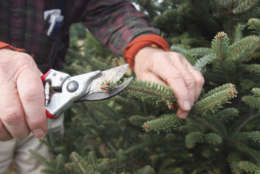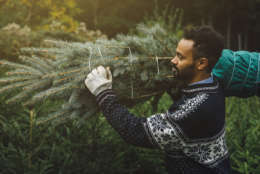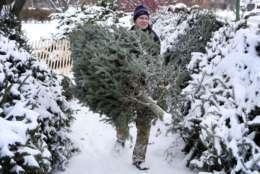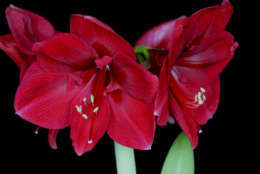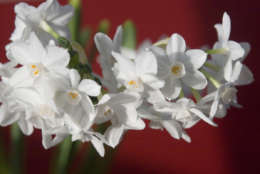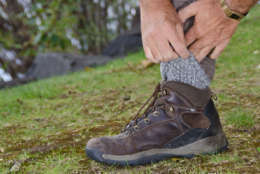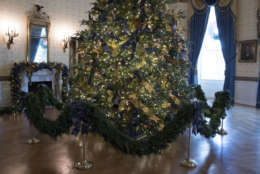Tired of dropped needles mulching the carpet under that cut Christmas tree you bought on a street corner? Get thee to a Christmas tree farm and “cut your own.”
Don’t worry — most, if not all, places will cut it for you. (I’m probably the only person who still goes in with his own bow saw.) Your big job is to get everybody to agree on the best tree! Good luck with that.
It’s a great family outing, and there’s almost always cookies and hot chocolate for the kids (and maybe you, if you behave). And if you’re buying local, you will be helping preserve farmland and getting a tree you know is super-fresh.
Just make sure that wherever the tree comes from, you follow my directions on super-hydrating it before you set it up to ensure a needle-free floor. And, find more tips about holiday blooms and being outdoors.

What kind of tree? The strong branches of a blue spruce (my favorite) make it the best tree for heavy ornaments. But wear gloves when you handle those branches, as the sharp needles can be a real pain in the hands. Firs (Douglas, Fraser, etc.) are the classic indoor trees. They have a more holiday aroma; their branches are much softer to the touch and they often hold their needles longer. But keep the ornaments light, as those soft flexible branches can’t handle heavy things — like your Hallmark talking Darth Vader with working light saber from the ’90s. Whatever your choice of tree, forsake old-school superhot incandescent lights for cool and energy efficient LEDs. The lack of heat really helps keeps trees from drying out — you can leave LEDs on all night if you like. Blown out bulbs will be a thing of the past, and you’ll notice the difference on your electric bill. In this photo: Christmas tree farmer Eric Sundback hand prunes a Douglas fir tree Sunday, Nov. 21, 2004, at his farm in Shepherdstown, West Virginia. Sundback has a unique way of pruning trees that lets the branches grow thinner than the typical machine sheered trees, allowing the decorations to hang more freely. (AP Photo/Jason Turner)
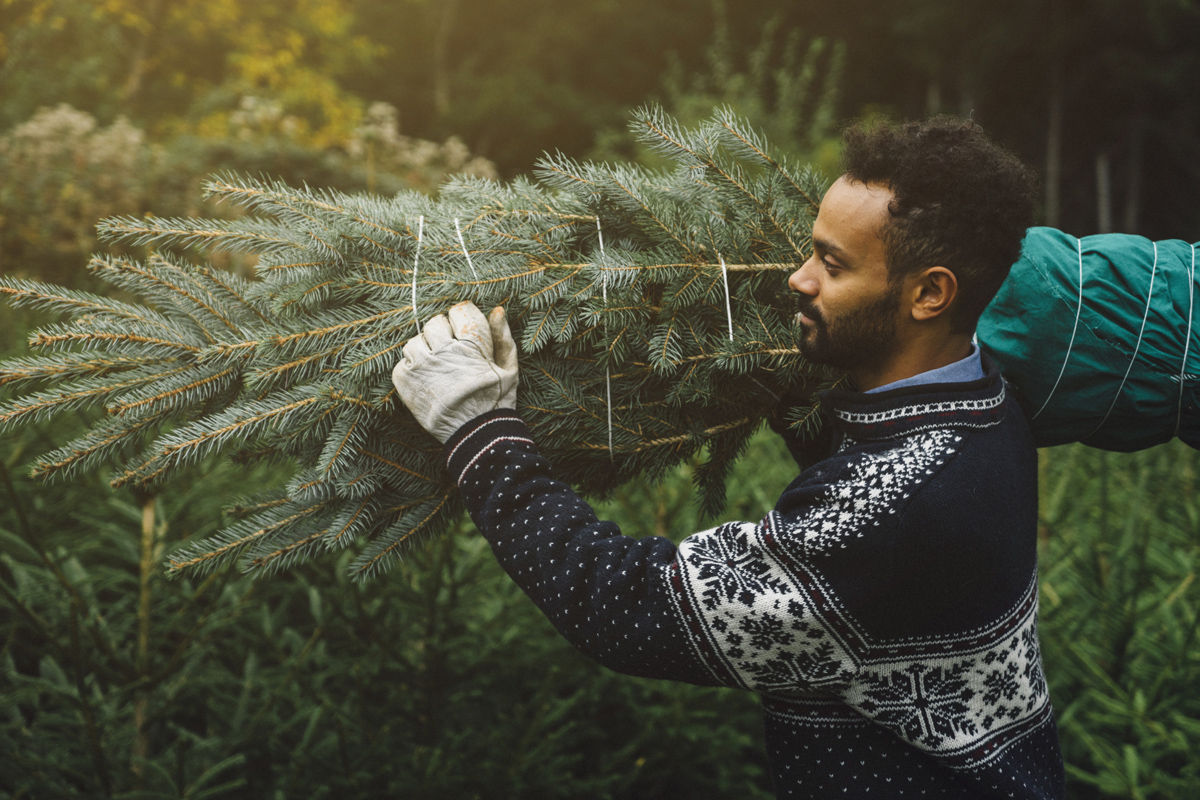
Pick cut trees like a pro Picking out a pre-cut tree this weekend? Make sure it’s nice and supple: Even the rigid branches of a blue spruce should bend easily. Reject trees that seem the least bit brittle. Shake the tree well to get rid of old needles, leaves and other debris. Many places will have a machine that does the job perfectly. If you do it, be sure to shake the tree sideways. Do not pound the cut end of the trunk on the ground. Don’t be alarmed if a lot of dead needles shake off; that’s natural. Just make sure the needles left on the tree don’t snap when you bend them. (Thinkstock)
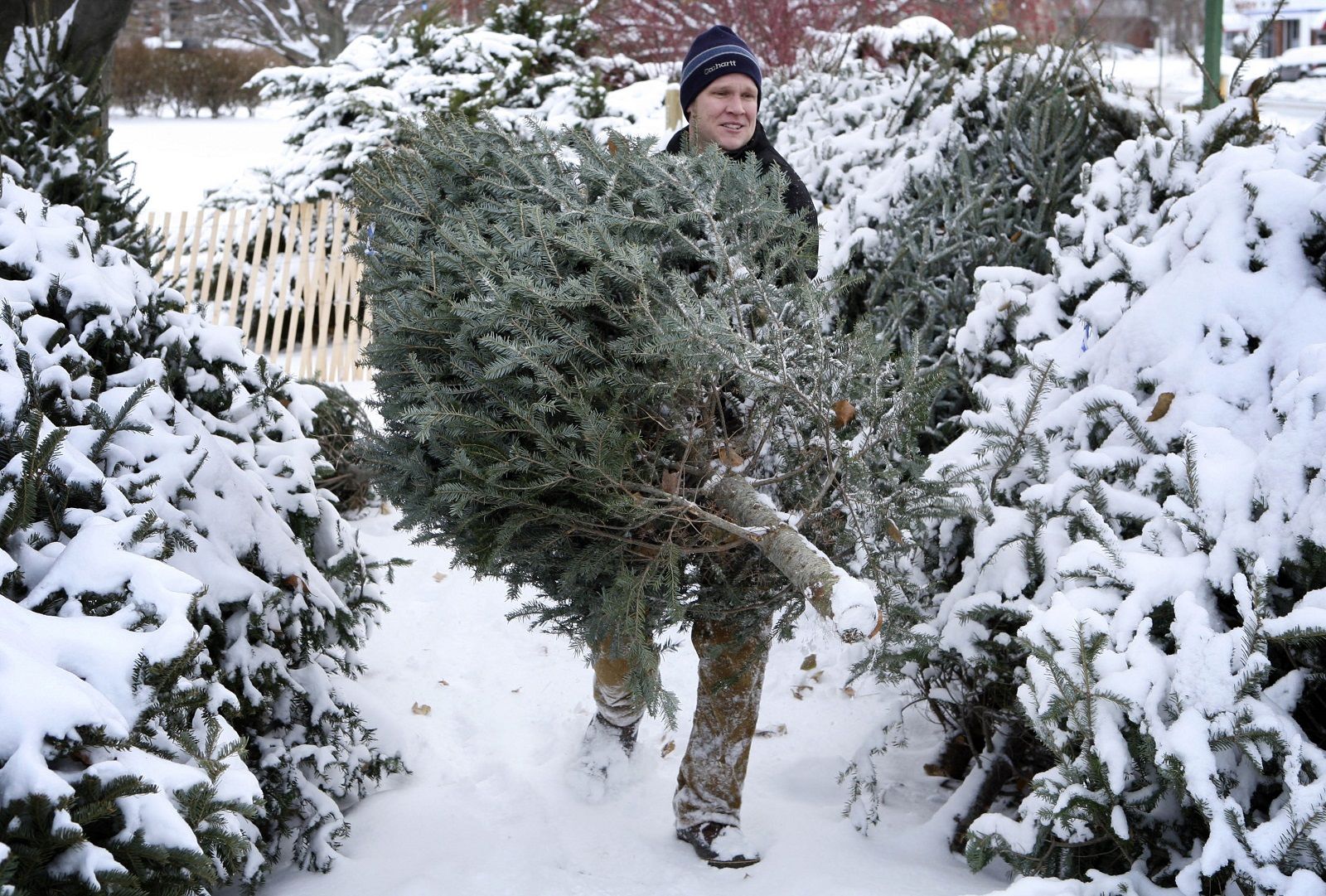
Cut tree hydration instruction Follow these steps to prepare your cut trees correctly before they’re set up, and you won‘t have a house full of dropped needles on Christmas Eve. Have a bow saw ready (a really handy and inexpensive tool), and use it to cut a few extra inches off the bottom of the stump when you get the tree home. Immediately plunge that freshly cut stump into a big container of water for 24 hours, adding water when and if necessary. Don’t be surprised if it is necessary; a tree that was cut during a dry spell can suck up gallons. So if that bucket keeps running dry, keep adding water. Unless you like your carpet served “extra sharp.” In this photo: John White carries a Maine-grown Christmas tree at a Rotary Club tree lot Tuesday, Dec. 4, 2007, in South Portland, Maine. (AP Photo/Robert F. Bukaty)
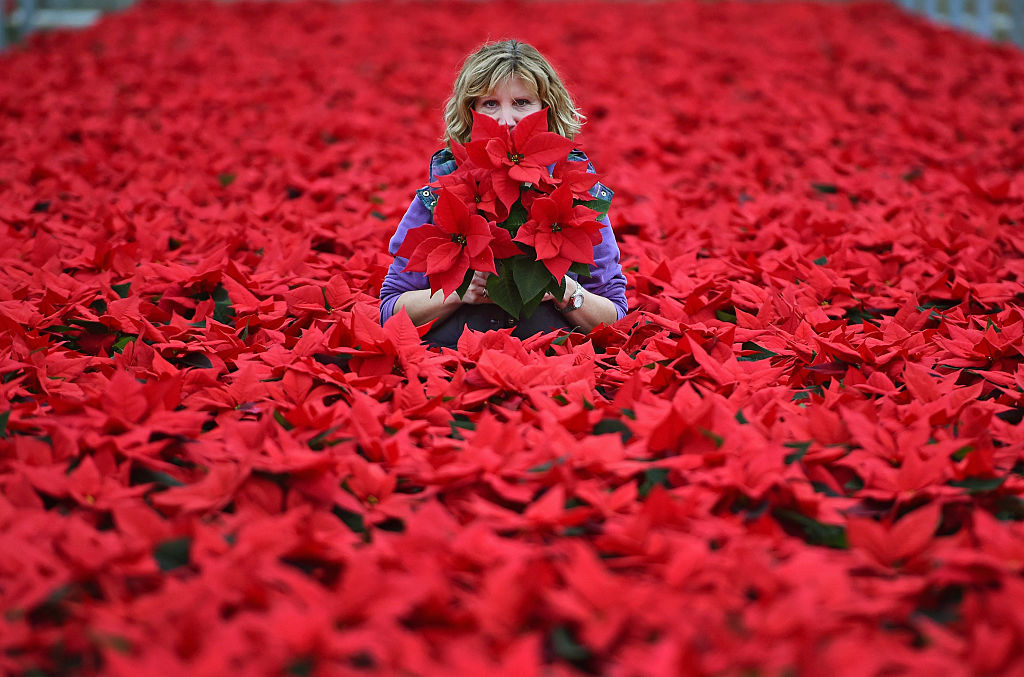
Who decided on tropical plants for a frigid holiday? All holiday plants are not alike — and many of them are wildly inappropriate for holiday weather around this region. The mini-Christmas tree known as the “Norfolk pine,” for instance, is not a pine — it’s an ancient species of conifer from Norfolk Island in the South Pacific Ocean, not Norfolk, Virginia. It’s also a houseplant that should stay inside all year. Poinsettias are from Mexico. But they can enjoy summer outdoors — put them outside when you plant your tomatoes — and then come back inside (in September, long before nights get really cool) to color up your holidays again next year. Both the Norfolk pine and poinsettias are very sensitive to cold. Bring them home promptly — don’t let them sit in a cold car — and get them safely inside right away. Once indoors, keep them away from both cold windowsills and hot air sources, and avoid overwatering. In this photo: Carolyn Spray holds one of her many poinsettia plants ready to be dispatched for the Christmas season on Nov. 23, 2015 in Loanhead, Scotland. (Photo by Jeff J Mitchell/Getty Images)
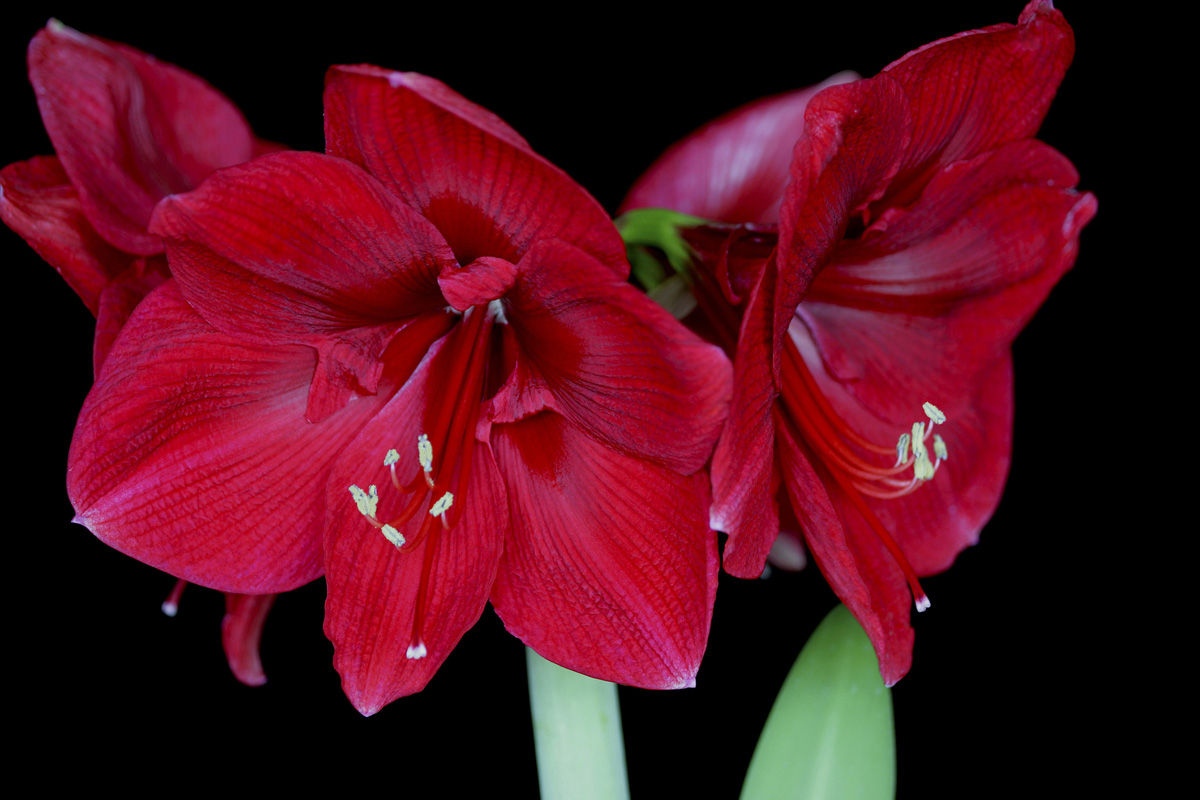
Holiday bulbs, stinky and bright Big bold amaryllis bulbs and pretty little paperwhites make great gifts to give or receive for the holidays. And while both are tropical bulbs, only one will reliably bloom again — and that’s the dramatic amaryllis. Here are a few tips for amaryllis care: “Grow your own” kits: Put some of the provided soil into the provided pot, and place the big bulb in the center so that only the bottom half of the bulb is under the soil line. Do not cover the entire bulb. Place the pot in a bowl of water and let it sit there for an hour or so, then move it into bright light. The flower stalk should soon emerge and grow tall quickly. Keep it in a bright, warm spot and water lightly until the flower head opens. Then, move it to the coolest possible place to prolong the bloom time. If you buy them already in flower, be sure to protect them from the cold on the way home. Then place them in a cool but bright spot and water lightly. Either way, don’t feed. When the flowers fade, clip off the seed head that will form at the top of the stalk, provide a gentle feeding, and give the plant’s green leaves as much light as possible. (But don’t take the tropical plant outside until late May.) I’ll tell you what to do after that after the holidays are over. (Thinkstock)
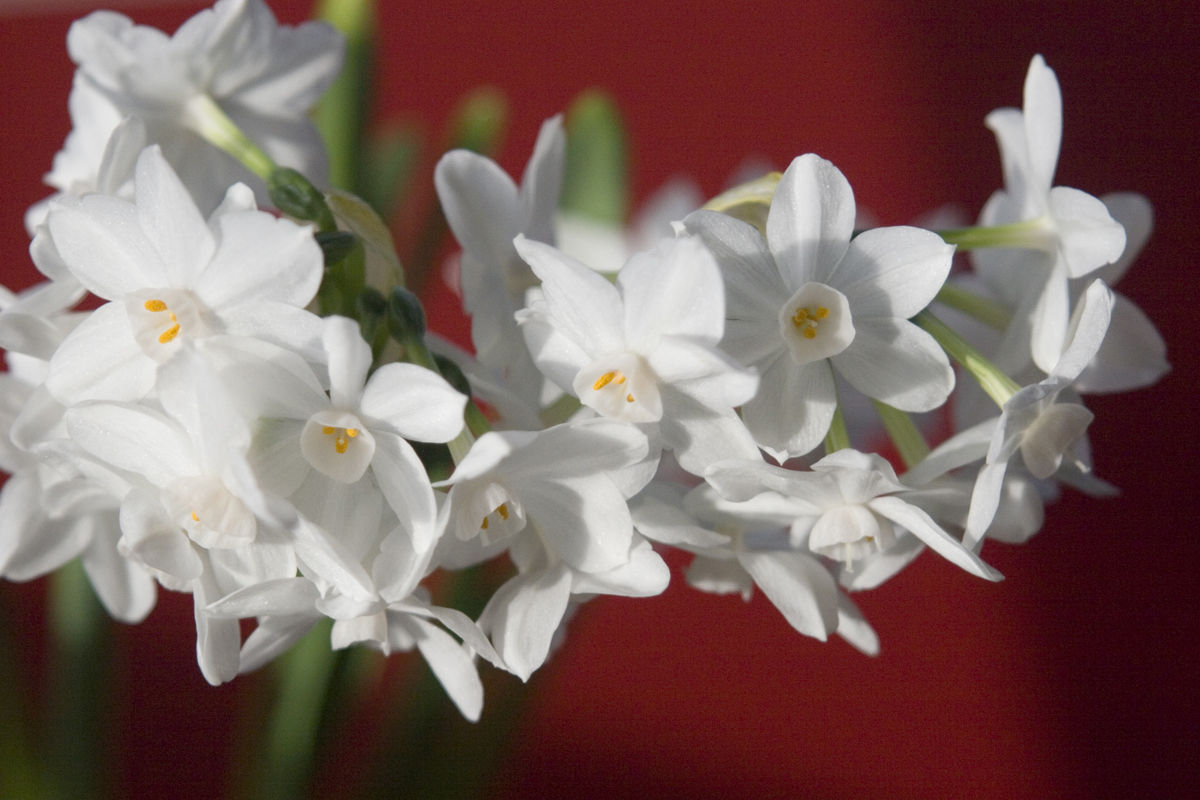
And for your heavily “fragrant” paperwhites, remember: These pretty (and smelly) little bulbs are “one-time wonders” that are impossible to coax back into bloom. You can grow them in potting soil or in water with little stones to hold the bulbs in place; it doesn’t matter. Mix a little bit of vodka — honest! — into their water to keep them compact and prevent their falling over. Give them bright light in a cool spot and enjoy the stinky show. Then, toss or compost the spent bulbs without guilt. (Thinkstock)

Don’t let ticks come home for the holidays The warm weather this weekend is going to make it fun to be outside: getting the Christmas tree, decorating the house or just plain walking through those wonderful carpets of colorful leaves out in the woods. Just be aware that a certain small danger that makes our lives miserable follows the weather just like us. I’m talking about ticks. While they are somewhat active all winter, ticks are especially active during the kind of warm spells we’re enjoying right now. I found one getting ready to settle in on my leg, about a foot above my ankle, just last week. But I knew to check and got it before it could attach. You have a couple of hours from the time a tick hops a ride on you to when they’ll begin to bite. Please don’t let this keep you out of the woods and away from places like Christmas tree farms, but do let it be a reminder to do a thorough tick check when you get home. (You’re looking for “a freckle that moves.”) Maybe run your clothes through the dryer, as well, if you were in a lot of weedy, brush-covered areas. (Thinkstock)
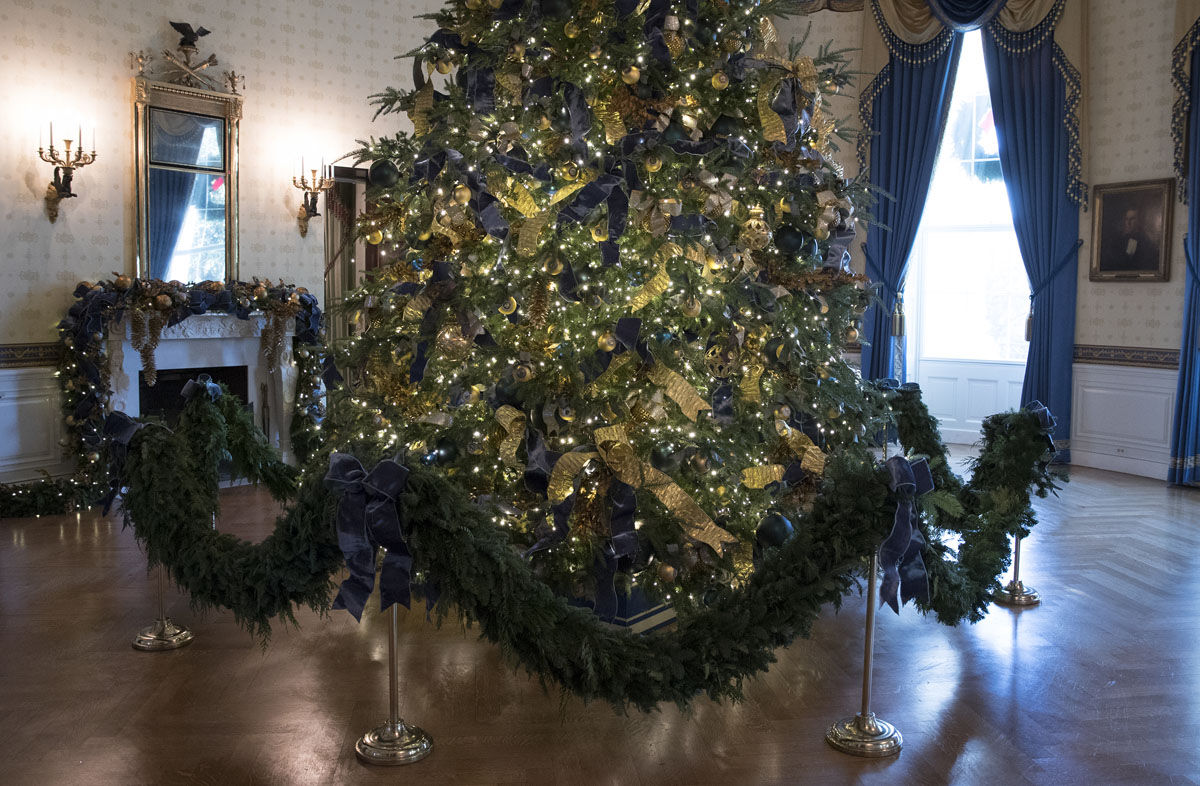
Christmas tree farm lists for Maryland & Virginia Here’s a great list for Northern Virginia from the “pick your own” network and here’s one for Maryland. Here’s another list from the Maryland Christmas Tree Farm Network. You should also do your own research: You may find a place more convenient to your area. Be sure to check multiple lists, as some farms only appear on one list. You’ll find many other lists online. The ones we’re presenting here were chosen for their information content and location help. Some sites we found that we chose not to include here only listed the farms alphabetically, which is not that helpful. In this photo: The official White House Christmas tree is seen in the Blue Room during a media preview of the 2017 holiday decorations at the White House in D.C., Monday, Nov. 27, 2017. (AP Photo/Carolyn Kaster)
